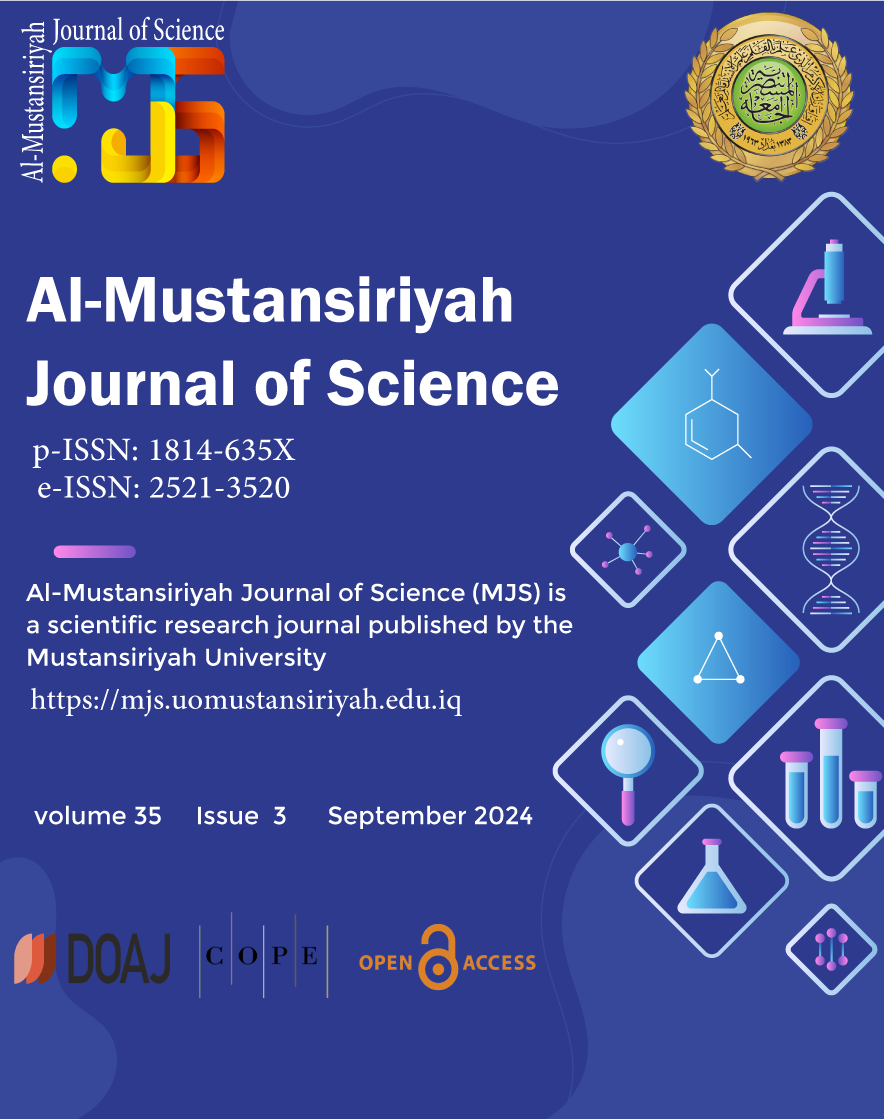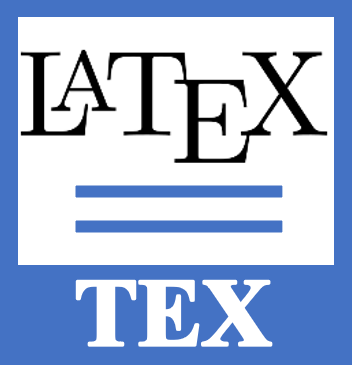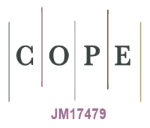Investigation of the Effect of Nano-melatonin on Oxidative Stress in Sera of Patients with Polycystic Syndrome
DOI:
https://doi.org/10.23851/mjs.v35i3.1397Keywords:
Oxidative stress, Melatonin, PCOS, Insulin resistance, ObesityAbstract
Background: The association between polycystic ovary syndrome (PCOS) and oxidative stress in women, the possible causes of PCOS, insulin resistance (IR), obesity, and oxidative stress. Oxidants are chemical elements that tend to gain electrons, losing positive charge. The Oxidative Stress (OS) is defined as an imbalance between the formation and synthesis of free radicals and the antioxidant defense system, which results in oxidative damage. Objective: The purpose of this research is to investigate the effect of nano-melatonin on oxidative stress in the sera of patients with polycystic syndrome. Methods: The study includes 120 Iraqi women, divided into two groups: 60 PCOS patients and 60 healthy control patients. Sample Analysis Biochemistry analyses the hormonal profile and determines the hormonal levels (LH, FSH, Testosterone, and Prolactin) that were identified for all controls and patients. Hormones analysis was performed using the enzyme-linked fluorescent assay (ELFA) technique. Synthesized ML nanoparticles by ultrasonic sonication. Results: The results indicate that the mean of serum LH significantly increased (P<0.02) in PCOS BMI ≥ 25 patients G1 (6.19±3.13) mIU/mL compared with controls C1 (4.504±1.591) mIU/mL, while a nonsignificant difference (P>0.05) when compared the BMI<25 kg/m2 for G2 (5.55±1.93) with control group C2 (6.31±2.58) of luteinizing hormone in G1 and G2. Conclusions: An increased ratio of LH to FSH was shown to be characteristic of PCOS. For PCOS, high LH values are crucial. For the purpose of diagnosing PCOS, high LH values are crucial release of gonadotropin hormones (LH, FSH) from the pituitary. To higher the production of androgen in ovarian theca cells, The LH receptor is activated by the luteinizing hormone (LH). The nano Mel was higher in the inhibition of Oxidative stress two causes nano-melatonin high surface area and small size.
Downloads
References
X. Zeng, Y. Xie, Y. Liu, S. Long, and Z. Mo, "Polycystic ovarian syndrome: Correlation between hyperandrogenism, insulin resistance and obesity," Clinica chimica acta, vol. 502, pp. 214-221, 2020.
O. Osibogun, O. Ogunmoroti, and E. D. Michos, "Polycystic ovary syndrome and cardiometabolic risk: Opportunities for cardiovascular disease prevention," Trends in cardiovascular medicine, vol. 30, no. 7, pp. 399-404, Oct. 2020.
W. R. Alfatlawi, "Study the effect of interleukin36 gamma and amh in iraqi women with pcos," Al-Mustansiriyah Journal of Science, vol. 28, no. 3, pp. 151-156, 2017.
N. Ajmal, S. Z. Khan, and R. Shaikh, "Polycystic ovary syndrome (pcos) and genetic predisposition: A review article," European Journal of Obstetrics & Gynecology and reproductive biology: X, vol. 3, p. 100 060, Jul. 2019.
S. M. Kadhim, F. S. Al-Fartusie, and N. K. Klichkhanov, "Evaluation of adiponectin and hepcidin with some biochemical parameters in sera of women with polycystic ovary syndrome," Al-Mustansiriyah Journal of Science, vol. 34, no. 1, pp. 52-57, Mar. 2023.
L.-H. Zeng, S. Rana, L. Hussain, M. Asif, M. H. Mehmood, I. Imran, A. Younas, A. Mahdy, F. A. Al-Joufi, and S. N. Abed, "Polycystic ovary syndrome: A disorder of reproductive age, its pathogenesis, and a discussion on the emerging role of herbal remedies," Frontiers in Pharmacology, vol. 13, Jul. 2022.
M. Zehravi, M. Maqbool, and I. Ara, "Polycystic ovary syndrome and reproductive health of women: A curious association," International Journal of Adolescent Medicine and Health, vol. 33, no. 6, pp. 333-337, 2021.
Y. Jiang, H. Shi, Y. Liu, S. Zhao, and H. Zhao, "Applications of melatonin in female reproduction in the context of oxidative stress," Oxidative medicine and cellular longevity, vol. 2021, pp. 1-11, Jul. 2021.
I. Kvetnoy, D. Ivanov, E. Mironova, I. Evsyukova, R. Nasyrov, T. Kvetnaia, and V. Polyakova, "Melatonin as the cornerstone of neuroimmunoendocrinology," International Journal of Molecular Sciences, vol. 23, no. 3, 2022.
M. B. Arnao, M. Giraldo-Acosta, A. Castejón-Castillejo, M. Losada-Lorán, P. Sánchez-Herrerı́as, A. El Mihyaoui,
A. Cano, and J. Hernández-Ruiz, "Melatonin from microorganisms, algae, and plants as possible alternatives to synthetic melatonin," Metabolites, vol. 13, no. 1, p. 72, 2023.
A. Brzezinski, S. Rai, A. Purohit, and S. R. Pandi-Perumal, "Melatonin, clock genes, and mammalian reproduction: What is the link?" International journal of molecular sciences, vol. 22, no. 24, p. 13 240, 2021.
C.-M. Yeh, S.-C. Su, C.-W. Lin, W.-E. Yang, M.-H. Chien, R. J. Reiter, and S.-F. Yang, "Melatonin as a potential inhibitory agent in head and neck cancer," Oncotarget, vol. 8, no. 52, pp. 90 545-90 556, Oct. 2017.
S. Mojaverrostami, N. Asghari, M. Khamisabadi, and H. H. Khoei, "The role of melatonin in polycystic ovary syndrome: A review," International journal of reproductive biomedicine, vol. 17, no. 12, p. 865, 2019.
H. Li, M. Liu, and C. Zhang, "Women with polycystic ovary syndrome (pcos) have reduced melatonin concentrations in their follicles and have mild sleep disturbances," BMC Women's Health, vol. 22, no. 1, 2022.
J. Li, J. Liu, T. Zhu, C. Zhao, L. Li, and M. Chen, "The role of melatonin in salt stress responses," International Journal of Molecular Sciences, vol. 20, no. 7, p. 1735, Apr. 2019.
A. K. Aranda-Rivera, A. Cruz-Gregorio, Y. L. Arancibia-Hernández, E. Y. Hernández-Cruz, and J. Pedraza-Chaverri, "Rons and oxidative stress: An overview of basic concepts," Oxygen, vol. 2, no. 4, pp. 437-478, Oct. 2022.
S. H. Mohammed and M. Karatepe, "The new melatonin derivative: Synthesis, characterization, biological properties, and serum determination by hplc-uv," Applied Nanoscience, vol. 13, no. 3, pp. 2611-2623, 2023.
G. N. Arık, G. T. Kaplanoğlu, A. S. Y. Sağlam, Z. Elmazoğlu, A. S. Dinçel, and C. M. Seymen, "Melatonin effective to reduce the microscopic symptoms of polycystic ovary syndrome-related infertility: An experimental study," Tissue Cell, vol. 81, p. 102 015, Apr. 2023.
J. Lan, "Overview of application of nanomaterials in medical domain," Contrast media & molecular imaging, vol. 2022, pp. 1-5, May 2022.
M. Benelmekki, Zero-dimensional nanostructures. Morgan & Claypool Publishers, 2019.
X. Hu, Y. Zhang, T. Ding, J. Liu, and H. Zhao, "Multifunctional gold nanoparticles: A novel nanomaterial for various medical applications and biological activities," Frontiers in Bioengineering and Biotechnology, vol. 8, p. 990, 2020.
P. K. Kaman and P. Dutta, "Synthesis, characterization and antifungal activity of biosynthesized silver nanoparticle," Indian Phytopathology, vol. 72, no. 1, pp. 79-88, Mar. 2019.
E. Sharif, S. Rahman, Y. Zia, and N. M. Rizk, "The frequency of polycystic ovary syndrome in young reproductive females in qatar," International journal of women’s health, pp. 1-10, 2016.
N. A. Malini and K. R. George, "Evaluation of different ranges of lh:fsh ratios in polycystic ovarian syndrome (pcos) - clinical based case control study," General and comparative endocrinology, vol. 260, pp. 51-57, May 2018.
K. Uçkan, H. Demir, K. Turan, E. Sarıkaya, and C. Demir, "Role of oxidative stress in obese and nonobese pcos patients," International journal of clinical practice, vol. 2022, 2022.
L. G. d. A. Chuffa, F. R. F. Seiva, A. A. Novais, V. A. Simão, V. M. Martı́n Giménez, W. Manucha, D. A. P. d. C. Zuccari, and R. J. Reiter, "Melatonin-loaded nanocarriers: New horizons for therapeutic applications," Molecules, vol. 26, no. 12, p. 3562, 2021.
T. C. Sun, X. C. Liu, S. H. Yang, L. L. Song, S. J. Zhou, S. L. Deng, L. Tian, and L. Y. Cheng, "Melatonin inhibits oxidative stress and apoptosis in cryopreserved ovarian tissues via nrf2/ho-1 signaling pathway," Frontiers in Molecular Biosciences, vol. 7, p. 163, 2020.
R. J. Reiter, D. X. Tan, S. Rosales-Corral, A. Galano, X. J. Zhou, and B. Xu, "Mitochondria: Central organelles for melatonin's antioxidant and anti-aging actions," Molecules, vol. 23, no. 2, p. 509, 2018.
Downloads
Key Dates
Received
Revised
Accepted
Published
Data Availability Statement
None.
Issue
Section
License
Copyright (c) 2024 Shahad Abbas Hameed, Fatin Fadhel Mohammed Al-Kazazz, Ahmed Mahdi Rheima, Wasan A.M. Al Taie

This work is licensed under a Creative Commons Attribution 4.0 International License.
(Starting May 5, 2024) Authors retain copyright and grant the journal right of first publication with the work simultaneously licensed under a Creative Commons Attribution (CC-BY) 4.0 License that allows others to share the work with an acknowledgement of the work’s authorship and initial publication in this journal.






















